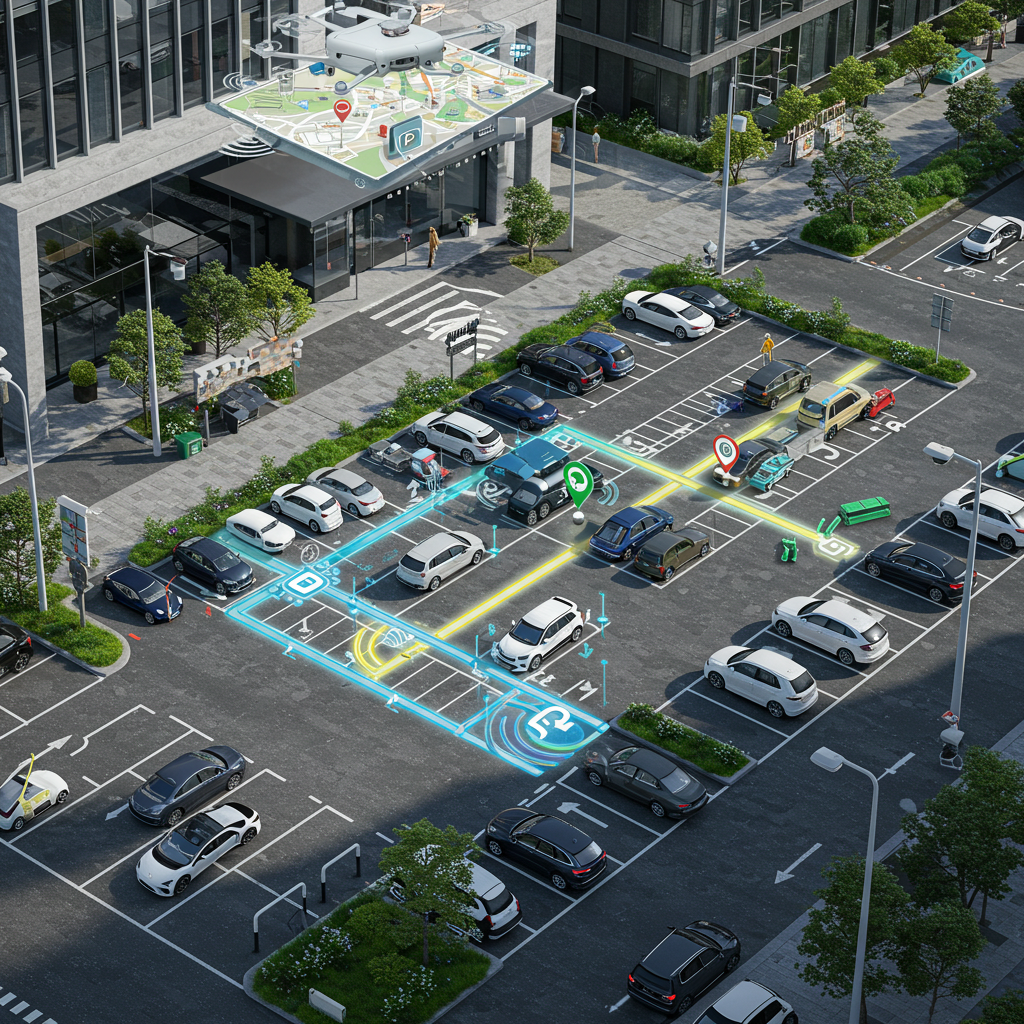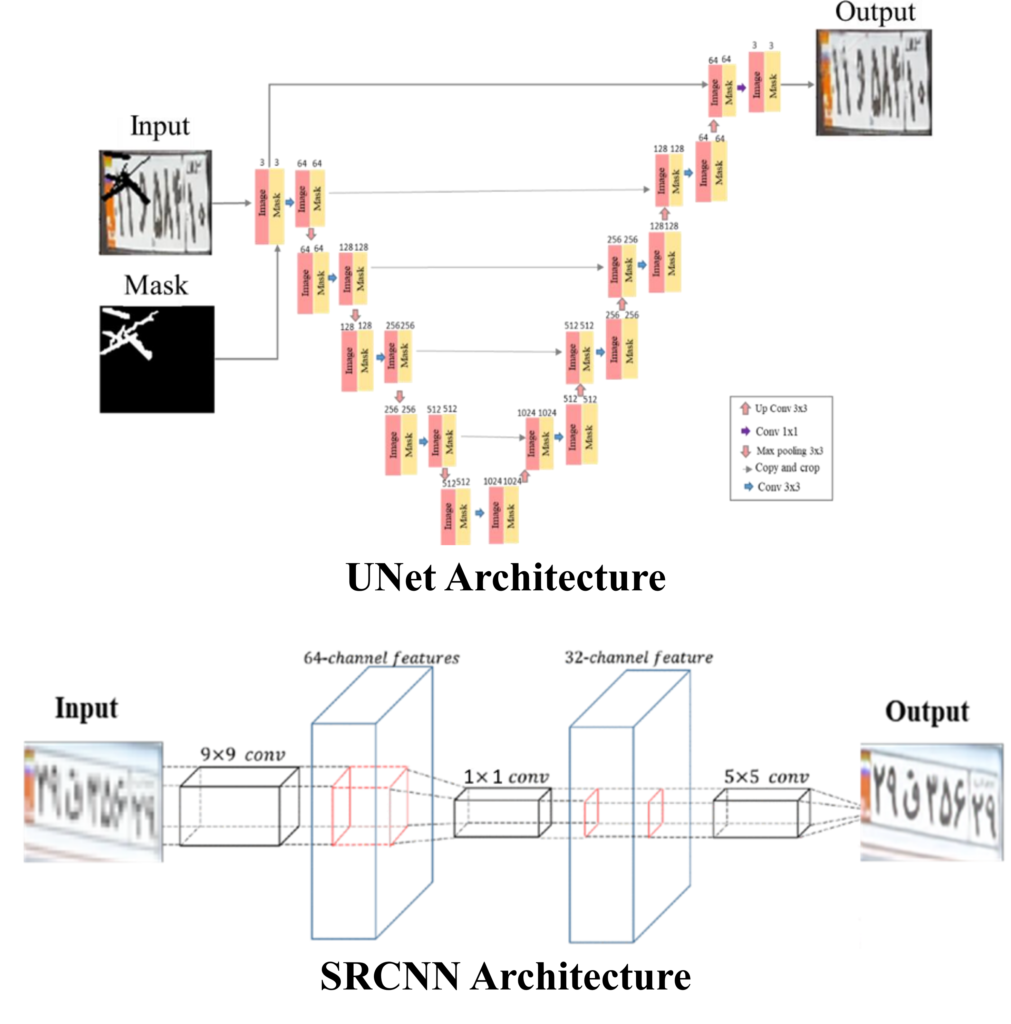Anyone who has circled a busy downtown area looking for parking knows the frustration all too well. As our cities grow more populous and urban areas expand, car ownership continues to rise dramatically. This urban growth has created a perfect storm of parking-related challenges that affect our daily lives in numerous ways. The search for safe, convenient parking has become increasingly competitive, and this has profound implications for sustainable urban development.
Consider what happens during a typical morning rush hour in any major city. Drivers spend valuable time circling blocks looking for available spots, contributing to traffic congestion, increased fuel consumption, and higher levels of air pollution. This inefficiency doesn’t just affect individual drivers, it impacts the broader urban ecosystem in terms of productivity losses, environmental damage, and reduced quality of life. The authors of the research note that proper energy usage, population growth, and the corresponding increase in vehicles have created significant challenges for parking facility utilization.
Traditional parking management systems rely heavily on human monitoring and manual processes. Parking attendants must visually verify vehicle information, issue tickets, and manage entry and exit of all the vehicles, which are time-consuming and prone to human error. These conventional approaches simply cannot keep pace with the demands of modern urban environments, where efficiency and accuracy are paramount. The regulation of vehicle traffic flow and verification of vehicle legitimacy often requires specialized personnel, making traditional solutions both labor-intensive and costly.
What makes a parking system truly “intelligent“? At its core, smart parking leverages advanced technologies to optimize the use of parking spaces, enhance security, and improve the overall parking experience for users. The researchers emphasize that developing intelligent parking systems has become crucial to tackle these challenges effectively.
Imagine driving into a parking garage where cameras automatically recognize your license plate, gates open automatically for registered vehicles, and digital displays guide you to available spots. This isn’t science fiction, it’s the reality of smart parking systems that are beginning to transform urban mobility. These systems combine sensors, data analytics, and automated processes to create a seamless parking experience that benefits both drivers and facility operators.
A study conducted by Nikta Shamsmohammadi,Sina Shaffiee Haghshenas, Giuseppe Guido and Vittorio Astarita from Italy, published their study in Journal of Soft Computing in Civil Engineering demonstrates how intelligent license plate recognition technology is revolutionizing parking management and creating more efficient urban spaces.
License plate recognition technology serves as the foundation for many smart parking innovations. These systems use cameras and sophisticated algorithms to capture and interpret license plate information, allowing for automated vehicle identification and access control. However, license plates can become difficult to read for various reasons such as, they might be partially obscured, damaged, dirty, or captured under poor lighting conditions.
This is where artificial intelligence shows its true value. AI-driven license plate recognition systems can overcome these challenges by using advanced algorithms to accurately interpret even problematic license plate images. As the researchers note, “AI-driven license plate recognition systems have revolutionized the process of discerning vehicles by extracting textual information from recorded images of license plates“.
The precision of license plate identification directly impacts the operational efficiency of parking gates and automated ticketing systems. When these systems work well, vehicles move through entry and exit points smoothly, parking fees are accurately calculated, and security is enhanced. When they fail, bottlenecks occur, customer satisfaction decreases, and security vulnerabilities may arise.
The researchers employed two sophisticated methodologies, namely, Inpainting and Super Resolution, combined with UNet and SRCNN (Super-Resolution Convolutional Neural Network) algorithms to enhance license plate recognition.
But what do these technical terms actually mean in practice? Inpainting is a technique used to reconstruct missing or damaged portions of an image. Think of it as digital restoration much like an art restorer might carefully rebuild damaged sections of a painting. When applied to license plates, inpainting algorithms can “fill in” areas that are obscured or damaged, reconstructing the complete plate information.
Super Resolution, on the other hand, is a technique that enhances the resolution and quality of images. It transforms low-resolution images into higher-resolution versions, bringing out details that might otherwise be too blurry or indistinct to read accurately. For license plate recognition, this means that even images captured from a distance or with low-quality cameras can be enhanced to reveal clear, readable plate information.
The researchers combined these techniques with powerful neural network algorithms. The UNet architecture, originally developed for biomedical image segmentation, excels at capturing both local and contextual information in images. The SRCNN model specializes in super-resolution tasks, learning the mapping between low and high-resolution images. By incorporating kernel regularizers into both models, the researchers were able to prevent overfitting and improve the models’ ability to generalize to new, unseen license plate images.
The researchers evaluated their approach on an extensive dataset comprising 4,171 instances of Persian license plates through a robust test of the system’s capabilities under real-world conditions. The findings revealed impressive accuracy rates. The UNet model with kernel regularizer achieved an accuracy of 0.79, meaning it correctly identified license plate information nearly 80% of the time. Even more impressive, the SRCNN model with kernel regularizer demonstrated an accuracy of 0.85, correctly interpreting license plates 85% of the time. These are remarkable figures considering the challenges involved in license plate recognition, particularly with damaged or obscured plates.
To put these numbers in perspective, consider a busy parking garage that processes 1,000 vehicles daily. With traditional systems, many vehicles with problematic license plates might require manual intervention, creating delays and inefficiencies. With an 85% accurate automated system, only about 150 vehicles might need such intervention with a significant improvement that streamlines operations and enhances the user experience.
Intelligent license plate recognition systems in smart parking facilities offer significant real-world applications and benefits, particularly in improving traffic flow and reducing congestion. By enabling registered vehicles to pass through without stopping to pull a ticket or pay at a booth, these systems greatly decrease entry and exit times. This technology allows for automatic recognition of license plates and electronic payment processing, which helps to eliminate bottlenecks and maintain smoother traffic flow within and outside parking areas. For instance, consider the experience of arriving at a busy shopping mall during the holiday season. Traditional parking typically involves long waits to enter, circulating to find an available spot, and queuing again to pay before leaving. In such cases, smart parking technology transforms this process into a more efficient one: your license plate is scanned upon entry, digital signs guide you to open spots, and payment is automatically processed as you exit, enhancing both convenience and overall user experience.
In terms of security benefits, Intelligent license plate recognition systems offer accurate recording of every vehicle that enters and exits a facility. This capability creates a reliable audit trail that is invaluable for security purposes, allowing for immediate identification of unauthorized vehicles and flagging of suspicious behavior for further investigation. For instance, if a vehicle is reported stolen, the system can alert security personnel as soon as it enters the parking facility. Additionally, these systems help prevent ticket swapping and other forms of payment fraud by matching entry and exit records with specific license plates, thereby enhancing overall security measures.
Smart parking systems provide numerous key benefits, particularly through the valuable data they generate. By tracking vehicle entry and exit times, stay durations, and visit frequencies, operators gain insights into usage patterns. This data aids in better resource allocation, allowing staffing adjustments during busy periods, implementing dynamic pricing for optimal occupancy, and making informed decisions on facility expansion or redesign. For instance, if data shows a section of a parking garage is underused, management can investigate and make changes to encourage better usage.
Additionally, smart parking has environmental benefits; by reducing the time drivers spend searching for spots, these systems decrease fuel consumption and emissions. Research shows that up to 30% of urban traffic stems from parking searches, significantly impacting air pollution and carbon emissions. Efficient parking solutions not only cut down idling time but also enhance air quality. Furthermore, the improved user experience leads to greater customer satisfaction. Frustrated drivers who once circled lots become happy customers when they easily find available spaces. This enhanced experience fosters business loyalty while municipalities enjoy satisfied citizens and visitors who see their city as modern and well-managed.
Despite the impressive advances in license plate recognition technology, challenges remain that need to be addressed. Researchers have noted that license plates can become illegible for various reasons, including both intentional and unintentional distortions. Environmental factors, such as poor lighting, inclement weather, and complex backgrounds, can significantly impact recognition accuracy. Moving forward, future research directions should focus on developing even more robust algorithms capable of handling these challenging conditions. Additionally, the integration of other technologies, like blockchain, for enhanced security and privacy protection presents an exciting frontier for smart parking innovation. Furthermore, the need for standardized approaches and interoperability between different smart parking systems is crucial. As these technologies become more widespread, the ability for different systems to communicate and share data will be increasingly important in creating truly smart urban environments.
In conclusion, Intelligent license plate recognition systems significantly enhance efficiency, security, and convenience. Research by Shamsmohammadi et al. shows the potential of advanced AI techniques like Inpainting and Super Resolution with neural networks for effective recognition systems. With up to 85% accuracy, these systems improve the parking experience for operators and users. Smart parking is essential for future smart cities, reducing congestion, boosting security, providing valuable data, and enhancing the overall experience. Continued research in this field promises further innovations, transforming today’s parking problems into seamless solutions with a few smartphone taps. The smart parking revolution is just beginning, and the future looks bright.
Reference
Shamsmohammadi, N., Shaffiee Haghshenas, S., Guido, G., & Astarita, V. (2024). Enhancing Operational Efficacy of Smart Parking Facilities through Intelligent License Plate Recognition. Journal of Soft Computing in Civil Engineering, 8(4), 94-115.10.22115/scce.2024.416135.1716
Lin T, Rivano H, Le Mouel F. A Survey of Smart Parking Solutions. IEEE Trans Intell Transp Syst 2017;18:3229–53. https://doi.org/10.1109/TITS.2017.2685143
Razmjoo A, Gandomi A, Mahlooji M, Astiaso Garcia D, Mirjalili S, Rezvani A, et al. An Investigation of the Policies and Crucial Sectors of Smart Cities Based on IoT Application. Appl Sci 2022;12:2672. https://doi.org/10.3390/app12052672
Sadeghian O, Oshnoei A, Mohammadi-ivatloo B, Vahidinasab V, Anvari-Moghaddam A. A comprehensive review on electric vehicles smart charging: Solutions, strategies, technologies, and challenges. J Energy Storage 2022;54:105241. https://doi.org/10.1016/j.est.2022.105241
Gnanaprakash V, Kanthimathi N, Saranya N. Automatic number plate recognition using deep learning. IOP Conf Ser Mater Sci Eng 2021;1084:012027. https://doi.org/10.1088/1757- 899x/1084/1/012027
Amzad Hossain M, Suvo IA, Ray A, Ariful Islam Malik M, Mridha MF. Number plate recognition system for vehicles using machine learning approach. Adv. Intell. Syst. Comput., vol. 1166, Springer; 2021, p. 799–814. https://doi.org/10.1007/978-981-15-5148-2_69
Pustokhina IV, Pustokhin DA, Rodrigues JJPC, Gupta D, Khanna A, Shankar K, et al. Automatic Vehicle License Plate Recognition Using Optimal K-Means with Convolutional Neural Network for Intelligent Transportation Systems. IEEE Access 2020;8:92907–17. https://doi.org/10.1109/ACCESS.2020.2993008
Nagaraj P, Muthamilsudar K, Nehanth NS, Shahid MR, Kumar S V. Perceptual image super resolution using deep learning and super resolution convolution neural networks (SRCNN). Adv Parallel Comput 2020;37:3–8. https://doi.org/10.3233/APC200112


